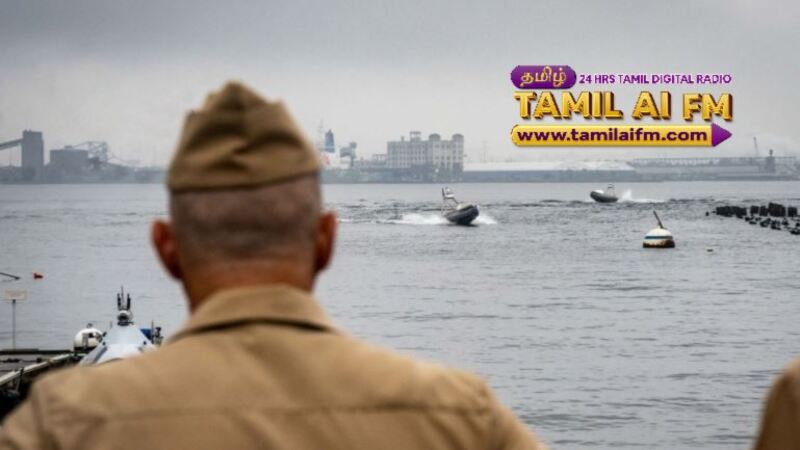NEW YORK — During a US naval test off the California coast last month, which was designed to showcase the Pentagon’s top autonomous drone boats, one vessel stalled unexpectedly.
As officials scrambled to fix a software glitch, another drone vessel smashed into the idling boat’s starboard side, vaulted over the deck, and crashed back into the water — an incident captured in videos obtained by Reuters.
The previously unreported episode, which involved two vessels built by US defence tech rivals Saronic and BlackSea Technologies, is one of a series of recent setbacks in the Pentagon’s push to build a fleet of autonomous vessels, according to a dozen people familiar with the programme.
Weeks earlier, during a separate Navy test, the captain of a support boat was thrown into the water after another autonomous BlackSea vessel it was towing suddenly accelerated, capsizing the support boat, according to four people familiar with the matter. The captain was rescued and declined medical attention. The incident was first reported by Defence Scoop.
Both incidents stemmed from a combination of software failures and human error, including breakdowns in communication between onboard systems and external autonomous software, according to a person with direct knowledge of the matter, who requested anonymity to share sensitive information.
The Navy, Saronic and BlackSea declined to comment on the incidents.
The videos showing the drone crash were verified by two Reuters sources, the landscape matching terrain imagery, the GARC-096 name ID and structure of the boat matching file imagery of Global Autonomous Reconnaissance Craft (GARC).
US military leaders, seeing the outsized impact of maritime drones in the Ukraine war, have repeatedly said they need autonomous swarms of aerial and maritime drones to hinder a potential advance by China across the Taiwan Strait. Taiwan itself has begun acquiring its own maritime drones.
The drones being developed in Ukraine, which often look like speedboats without seats, and are capable of carrying weapons, explosives and surveillance equipment, are primarily remote-controlled and cost close to US$250,000 (RM1 million) — making them optimal for kamikaze missions that have effectively neutralized Russia’s Black Sea Fleet.
The US, meanwhile, is aiming to build an autonomous naval fleet that can move in swarms and without human command — a more ambitious task at a higher price point; as much as a few million dollars per speedboat.


